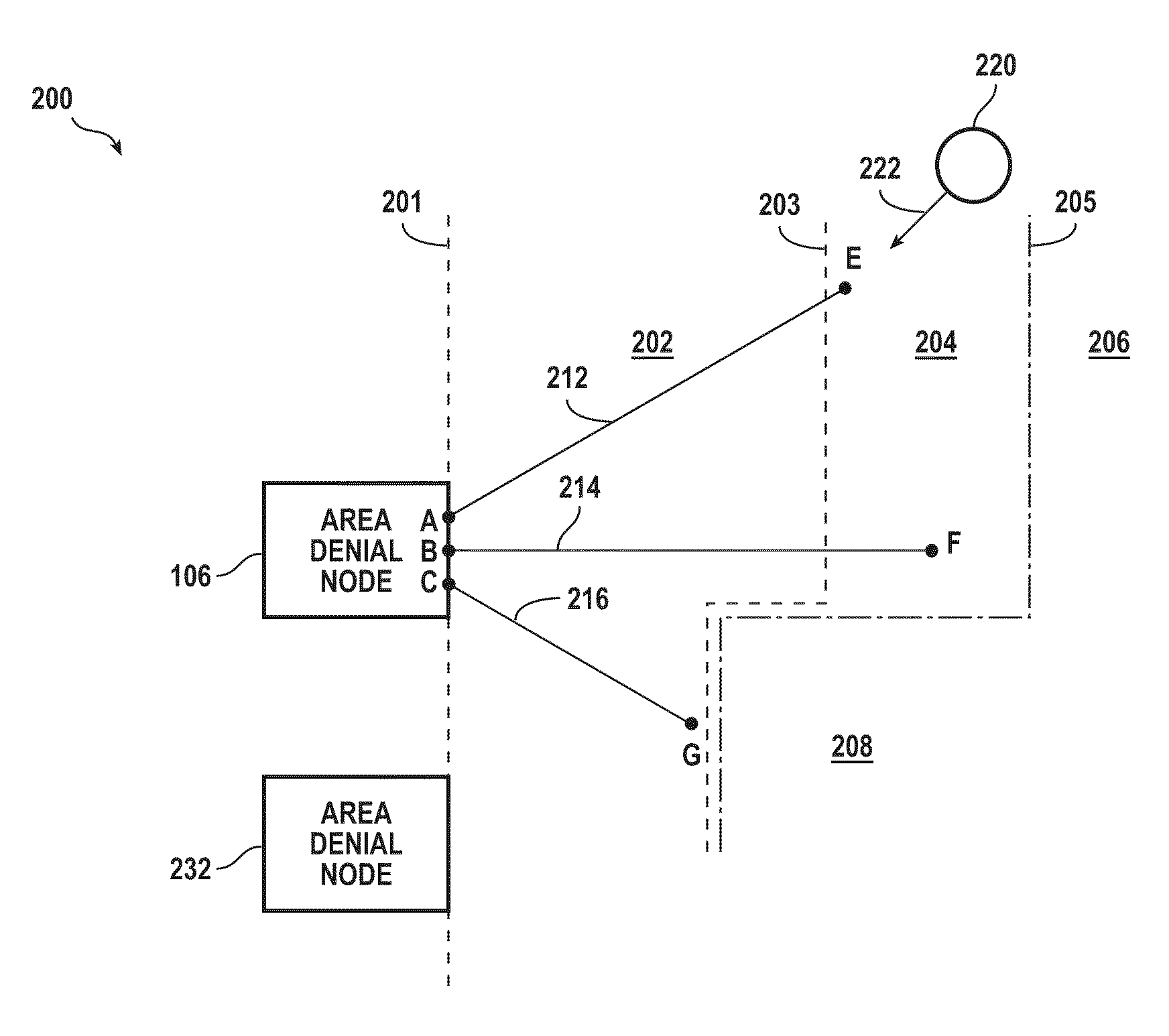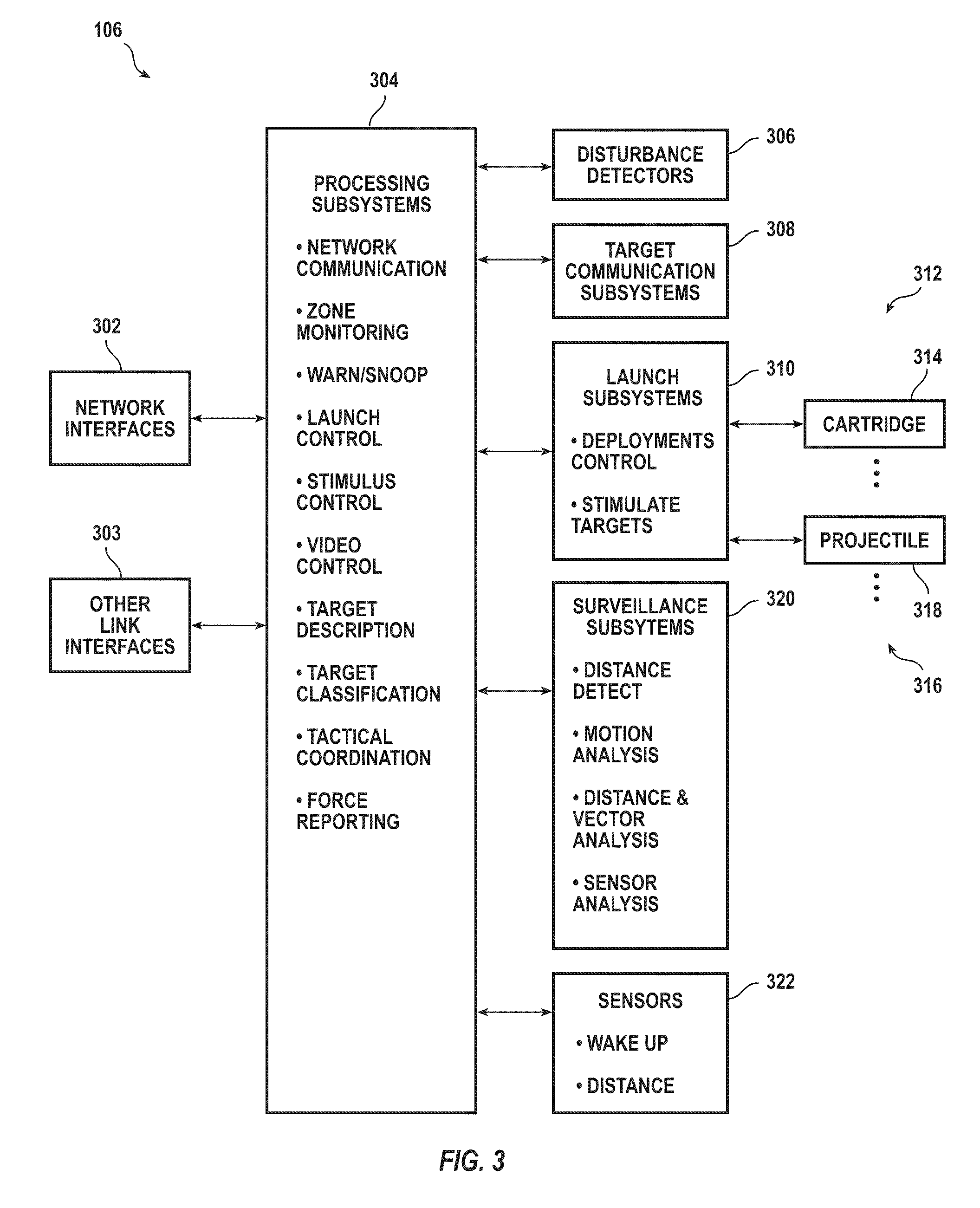Systems and methods for area denial
a technology of system and method, applied in the field of system for area denial, can solve the problems of ineffective deployment of force, failure or failure of conventional area denial, and insufficient accuracy of force deployment,
- Summary
- Abstract
- Description
- Claims
- Application Information
AI Technical Summary
Benefits of technology
Problems solved by technology
Method used
Image
Examples
Embodiment Construction
[0030]An area denial system, according to various aspects of the present invention, inhibits locomotion of a human of animal target with respect to a zone. Successful area denial may be complete as to a traget; or, incomplete yet sufficient as to a target. Inhibiting includes deterring further voluntary movement with respect to the zone. Inhibiting includes pain compliance (e.g. sufficiently interfering with locomotion) and / or immobilization (e.g., halting locomotion). Force used to inhibit may be applied to cause pain and / or to immobilize. Immobilization may include electrically disrupting the target's voluntary control of its skeletal muscles. An amount of force applied may be determined with respect to a classification of the target (e.g., kind of animal, human, size), present location of the target (e.g., more force at locations deeper within the zone), and / or velocity and direction of movement of the target. In a simpler implementation, the same force may be used against all cl...
PUM
 Login to View More
Login to View More Abstract
Description
Claims
Application Information
 Login to View More
Login to View More - R&D
- Intellectual Property
- Life Sciences
- Materials
- Tech Scout
- Unparalleled Data Quality
- Higher Quality Content
- 60% Fewer Hallucinations
Browse by: Latest US Patents, China's latest patents, Technical Efficacy Thesaurus, Application Domain, Technology Topic, Popular Technical Reports.
© 2025 PatSnap. All rights reserved.Legal|Privacy policy|Modern Slavery Act Transparency Statement|Sitemap|About US| Contact US: help@patsnap.com



